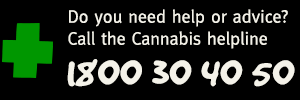Indigenous Research


It has long been recognised that the quality and quantity of information on Indigenous patterns of illicit drug use requires significant improvement.1 Reviews of the available data suggest that as with the general population there are varying patterns of use of different illicit drugs according to location as this influences availability among other factors. In general, however, Indigenous Australians who become involved in drug use typically begin that use from a younger age than other Australians.1
In contrast, Indigenous workers across the country are becoming increasingly concerned about the recent rapid escalation and pervasiveness of cannabis use within their respective communities.
Studies in remote Indigenous communities in the 'Top End' of the Northern Territory (NT) did not detect cannabis use in a 1980s survey conducted in the region. A rapid rise in its use, however, was evident from the mid-1990s due to expansion of local trafficking. In 2001, studies by Alan Clough and colleagues found that between 60%-73% of males and 16%-27% of females (aged 13-36 years) in eastern Arnhem Land (NT) communities were using cannabis, with around three-quarters of these using it at least weekly and 44% smoking it daily. Follow-up studies in 2005-06 in the same communities indicated that these high rates persisted with 61% of males and 58% of females in these age groups using cannabis at least weekly. The majority of these users (88%) reported symptoms of cannabis dependance.
Professor Clough’s team are replicating this work in Cape York and the Torres Strait Islands and reported their finding of similarly very high levels of use in these remote communities at the recent NCPIC sponsored National Cannabis Conference in 2009. The consequences of high levels of cannabis use in remote Indigenous communities is discussed in a recent editorial on the issues in the Medical Journal of Australia.2
At the national level, the most recent National Aboriginal and Torres Strait Islander Health Survey (2004-05) reported that 23% of non-remote Indigenous persons aged over 17 years reported using cannabis in the previous 12 months with a comparison in the same table with 20% reporting cannabis use in the 2002 National Aboriginal and Torres Strait Islander Social Survey.3
No meaningful direct comparisons can be made on these aggregated data given the differing demographic profile (particularly age), sample sizes and methodologies used in the various surveys. Over the same time period, however, levels of cannabis use in the previous 12 months were markedly lower and declining in the general Australian population.4
Further information
If you need to speak to someone about a cannabis-related issue you can call the Cannabis Information and Helpline on 1800 30 40 50. The Helpline operates 11am – 7pm Monday to Friday (including public holidays). After hours, all calls are directed to a message service as well as to Lifeline 13 11 14 as an alternative contact.
If you are in need of information and/or resources to do with other drugs you will need to contact the alcohol and drug information service (ADIS) in your state and territory. ADIS is staffed by trained counsellors who can assist you with information, appropriate treatment and counselling.
References
-
Australian Institute of Health and Welfare. (2006). Drug use among Aboriginal and Torres Strait Islander peoples. An assessment of data sources. AIHW: Canberra (Cat no. PHE 76).
-
Lee, KS, Conigrave, KM, Patton, GC & Clough, AR. (2009). Cannabis use in remote Indigenous communities in Australia: Endemic yet neglected. Medical Journal of Australia, 190(5), 228-229.
-
Australian Bureau of Statistics. (2006). National Aboriginal and Torres Strait Islander Health Survey. Australia 2004-2005. ABS: Canberra (Cat. No. 4715.0) (Table 20, page 47).
-
Australian Institute of Health and Welfare. (2005). Statistics on drug use in Australia 2004. AIHW: Canberra (Cat no. PHE 62).









